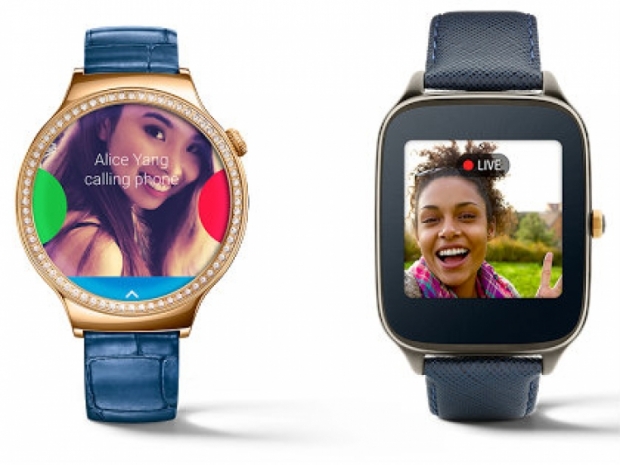The new SoC should enable innovative wearable devices and watch designs with slicker designs, longer battery life, smart sensing and always connected experience via integrated 3G /LTE.
30 percent smaller, needs 25 percent less power
Snapdragon Wear 2100 comes in two versions: one works via tethered Bluetooth and Wi-Fi and the other uses 3G / 4G.
Both of them will be 30 percent smaller than the Snapdragon 400. Snapdragon Wear 2100 should enable new, thinner, sleeker designs. It needs 25 percent less power than the Snapdragon 400 across tethered and connected use cases, allowing for longer day of use battery life.
The new SoC has a smarter sensor array with an integrated, ultra-low power sensor hub that enables richer algorithms with greater accuracy than the Snapdragon 400. The Next-generation LTE modem with integrated GNSS, along with low power Wi-Fi and Bluetooth should improve an always connected experience. Qualcomm didn’t mention what kind of LTE the SoC supported.
Raj Talluri, senior vice president, product management, Qualcomm Technologies, Inc. said
“Qualcomm Technologies is a technology leader in the wearables space with its breadth of product offerings including the Snapdragon™ 400 processor, which powers the vast majority of current Android Wear smartwatches.
With the introduction of the Snapdragon Wear platform and Snapdragon Wear 2100 SoC, Qualcomm Technologies is well-positioned to extend its progress in wearables technology by enabling sleek designs, long battery life, smart sensing, and always- connected experiences in the next generation of wearable devices. These benefits are expected to have widespread appeal across the mobile, fashion and sports ecosystems in the wearables space.”
David Yoon, vice president, wearables, LG Electronics said:
“LG and Qualcomm Technologies have led the wearable technology space with close collaboration over the last two years and have launched multiple smartwatches and kid watches. We are delighted about Qualcomm Technologies’ next generation wearable plans, are planning to extend our collaboration with the new Qualcomm Snapdragon Wear 2100 processor, and look forward to launching new smartwatches and other wearable devices that bring new and innovative use cases to consumers later this year.”
Chris Penrose, senior vice president, Internet of Things, AT&T Mobility
“Wearables have captured the public’s imagination, but a lack of connectivity can lead to frustration. With Snapdragon Wear’s new platform, it’s clear that AT&T and Qualcomm Technologies share a vision for independently connected wearables that create a seamless experience for those who wear them. AT&T’s own NumberSyncSM technology links compatible smartwatches to your primary phone number, creating one number for all your devices.”
Customers can develop tethered and connected SKUs using the same PCB design, and reduce development costs. Snapdragon Wear 2100 supports both Android Wear, and Android and is targeted for next generation connected and tethered smartwatches, children's and old person's watches, smart bands, and smart eyewear and smart headset segments.
50 new devices in 2016
Qualcomm claims that its technology is used in 65 wearables in 30 countries with 50 more expected to launch later this year.
Snapdragon Wear 2100 and other products within the Snapdragon Wear platform are available today and we can expect to see new watches based on the new SoC latest at the mobile world congress that starts in 10 days, February 22 in Barcelona.




